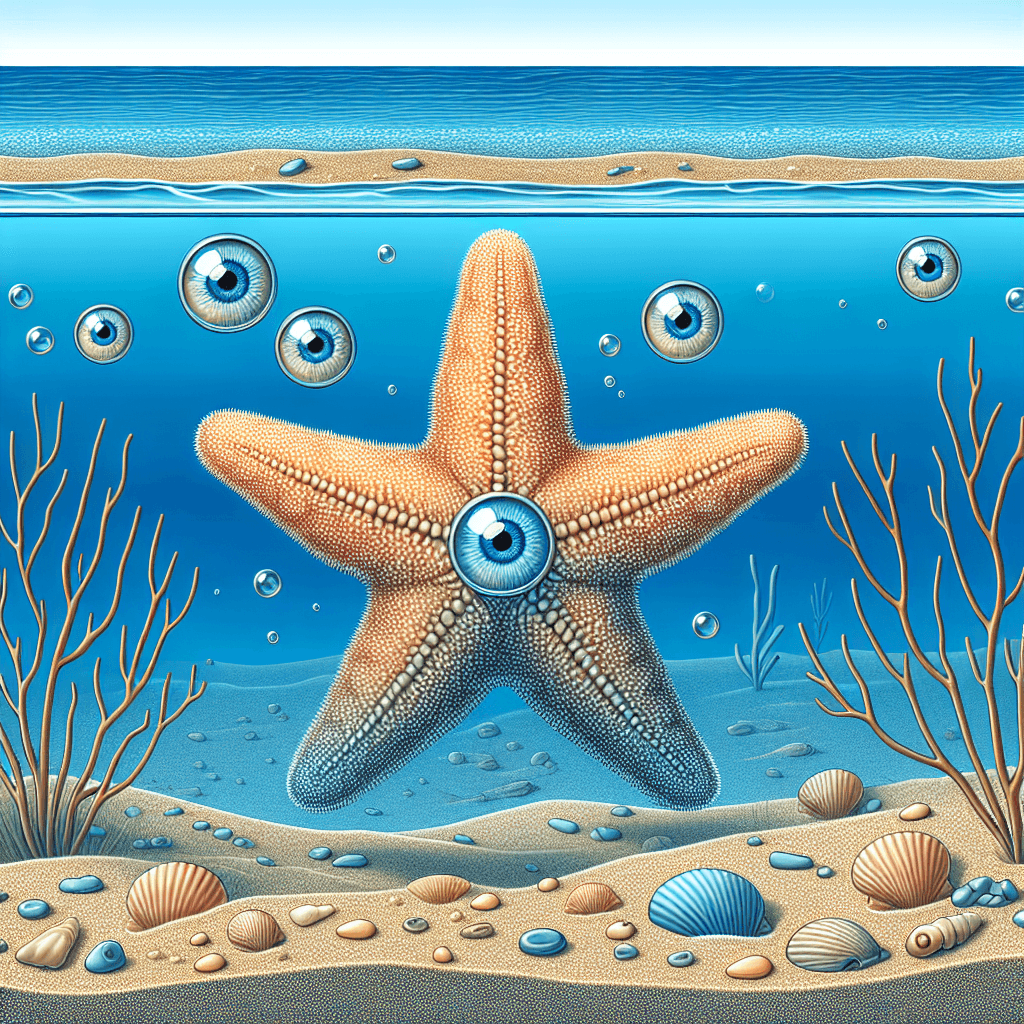Why do starfish have an eye at the end of each arm
It sounds like a creature from science fiction, but it's true: starfish have a crude eye on the tip of each arm. They can't see predators or prey, so what's the one crucial thing they're desperately looking for?


Too Long; Didn't Read
TLDR: Starfish have simple eye spots on their arm tips to detect light and dark. This helps them navigate slowly towards large, safe structures like coral reefs and avoid dangerously exposed areas.
The Eyes Have It: Why Do Starfish Have an Eye at the End of Each Arm?
Imagine trying to navigate the world with your eyes located on your fingertips. Every time you wanted to see where you were going, you’d have to point a hand in that direction. It sounds like something from a science fiction story, but for the humble starfish, it’s a daily reality. These fascinating marine creatures, also known as sea stars, possess a feature that baffles many: a tiny eye at the tip of each arm. But what can these simple eyes actually see, and what purpose do they serve? This post will delve into the incredible world of starfish vision, exploring the anatomy, function, and crucial survival advantages of having an eye on every limb.
Not Your Average Eyeballs: The Anatomy of a Starfish Eye
When you hear the word "eye," you probably picture a complex, lens-based organ like our own. A starfish’s eyes are fundamentally different. They are not camera-type eyes capable of forming sharp, detailed images. Instead, they are simple compound eyes, clusters of light-sensitive cells called ocelli.
Located at the very tip of each arm, often protected by tiny spines, each ocellus acts as a single pixel in the starfish’s visual field. Lacking a true lens to focus light, the starfish eye can't perceive fine details, intricate shapes, or a spectrum of colors. Think of it less like a high-definition camera and more like a very basic light sensor. Research, including pioneering work from the University of Copenhagen, has confirmed that these eyes are structurally capable of forming a coarse image of the surrounding world.
A Blurry, Black-and-White World: The Vision of a Starfish
So, what does a starfish see with these rudimentary eyes? Their view of the world is extremely low-resolution and monochromatic. Essentially, they see in blurry black and white. They can't spot a small fish swimming by or distinguish a fellow starfish from a rock based on its shape.
However, what they can do is detect large, contrasting shapes and changes in light and shadow. While this level of vision seems incredibly limited to us, it’s perfectly suited for a slow-moving creature living on the seafloor. Their visual system isn't designed for chasing prey but for a much more fundamental task: finding their way home.
Why Have Eyes on Your Arms? The Survival Advantage
For a starfish, these simple eyes are a powerful evolutionary tool that provides a significant survival advantage, primarily for navigation. They spend their lives in complex environments like coral reefs or rocky seabeds, and wandering too far could leave them exposed to predators or stranded in barren areas without food.
The key functions of their unique visual system include:
- Staying Home: The most critical role of a starfish's eyes is to keep it within its habitat. They can see large, stationary structures, like the dark, looming shape of a coral reef against the brighter open water. This allows them to orient themselves and ensure they don't stray too far from safety and a reliable food source.
- Navigation and Orientation: Studies have shown that when a starfish is moved a short distance from its reef, it uses its eyes to navigate back. Researchers observed that starfish with their eyes covered wandered aimlessly, while those with their vision intact actively moved back towards the large, dark shape of the reef.
- Avoiding Obstacles: By detecting large shadows and dark shapes, a starfish can steer clear of major obstacles or potential dangers in its path, even if it can't identify exactly what they are.
Essentially, a starfish combines the visual information from all its arms to build a crude, 360-degree picture of its immediate surroundings, allowing it to make vital navigational decisions.
Conclusion
While they may not be able to admire the vibrant colors of a coral reef, the eyes at the end of a starfish’s arms are a perfect example of evolutionary efficiency. These simple, light-sensing ocelli provide the exact information the creature needs to survive: a low-resolution map of its world that allows it to navigate, find shelter, and stay within its home territory. The next time you see a starfish, take a moment to appreciate the remarkable adaptation on each arm—a tiny window to the world that, while blurry, is the key to its owner's survival in the vastness of the ocean.


